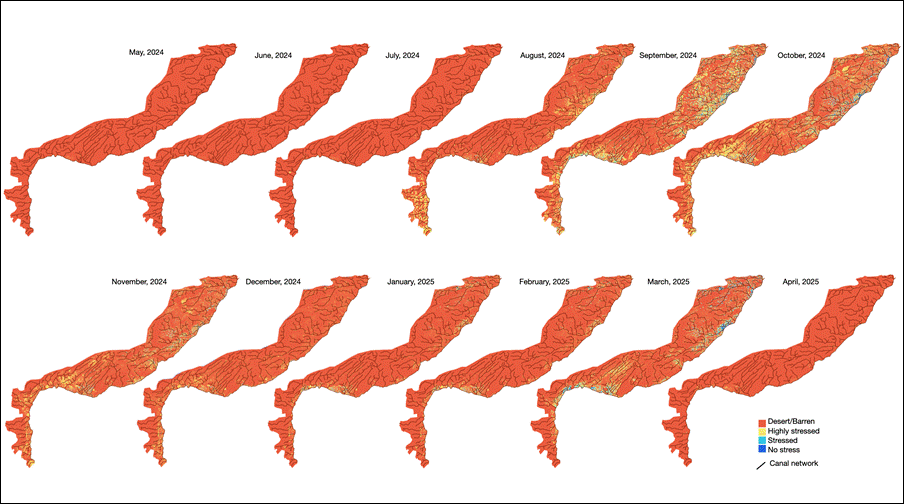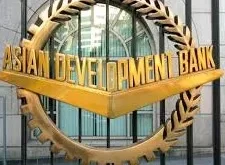
Asghar Hussain and Hassan Abbas
Responding to a question about failure of Rajasthan Canal in India, that it is less than 1% successful, Ms Azma Zahid Bukhari, the provisional minister for information, Government of Punjab, dismissed the failure and informed the audience of a press briefing that Indians have already settled in the desert and have greened their part of Cholistan (called Rajasthan in India).
We used satellite data (Sentinel-2 L2A) to analyze moisture index for 3.8 million acre of Phase II of Rajasthan Canal Command area to reveal the state of ‘greening’ in there. It is the same satellite data which is used by Land Information Management System (LIMS) of Green Pakistan to assess state of moisture stress in agriculture fields. The data is available in public domain and open source tools, like QGIS, can be used to access and analyze it.
The values of moisture index from the satellite data range from minus one (-1) to plus one (+1). Negative values indicate barren lands or deserts. Positive values from 0.0 to 0.2 indicate high water stress, from 0.2 to 0.4 water stress, and 0.4 to 1.0 no water stress.
For the above mentioned canal command area in Rajasthan, we analyzed the moisture index on monthly basis for the previous twelve months, May 2024 to April 2025. Map 1 shows the area analyzed in Rajasthan complete with extensive network of expensively built canals by India. The analysis reveals that: i) only limited cropping have been attempted in Rajasth an between August 2024 and March 2025, while the moisture index remains negative in 99% area in the months of April, May, June and July; ii) Between August to March, only 0.07% to 0.95% area was without water stress, which is less than 1% of the total area; iii) 0.37% to 4.6% area was under water stress; iv) 5.9% to 21.2% area was under high water stress; and v) between 73.5% to 99.8% area had remained barren throughout the year.
The analysis is illustrated in Map 2 and Plot 1 for monthly moisture index maps and respective percentages of desert/barren areas, and areas from high water stress to no water stress. On average, during the entire previous year, Southern Rajasthan Canal Command remained barren over 98% of the area, under high water stress over 1.2% of area, and almost negligible – less than 1% – area had been under low moisture stress or no stress.
This analysis is further validated by satellite imagery of the area. One can zoom into the area and see that many canals, over tens of kilometers, have been reclaimed by shifting sand dunes and now lay buried. Satellite imagery also reveals many attempts where efforts are made to level the land to facilitate canal irrigation, but most efforts have not yielded greenery. Besides, there is well documented resentment in Indian public impacted by this failure.
This analysis clearly shows that the person who asked this question had done his homework while Ms Bukhari by dismissing the facts and misleading the public committed a clear violation of PEKA Act.
Map 1: Extensive network of Rajasthan Canal vis-á-vis Green Pakistan area acquired in Cholistan.

Map 2: Moisture Index maps of past 12 months for Southern Rajasthan Canal Command Area.

Plot 1: Graphical summary of monthly moisture index in Southern Rajasthan Canal Command area.
Note: Asghar Hussain is an expert in hydroinformatics and Hassan Abbas is an expert in hydrology and water resources. The authors can be reached at [email protected]
 BeNewz
BeNewz




